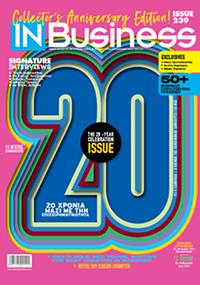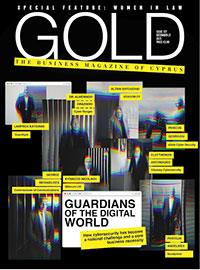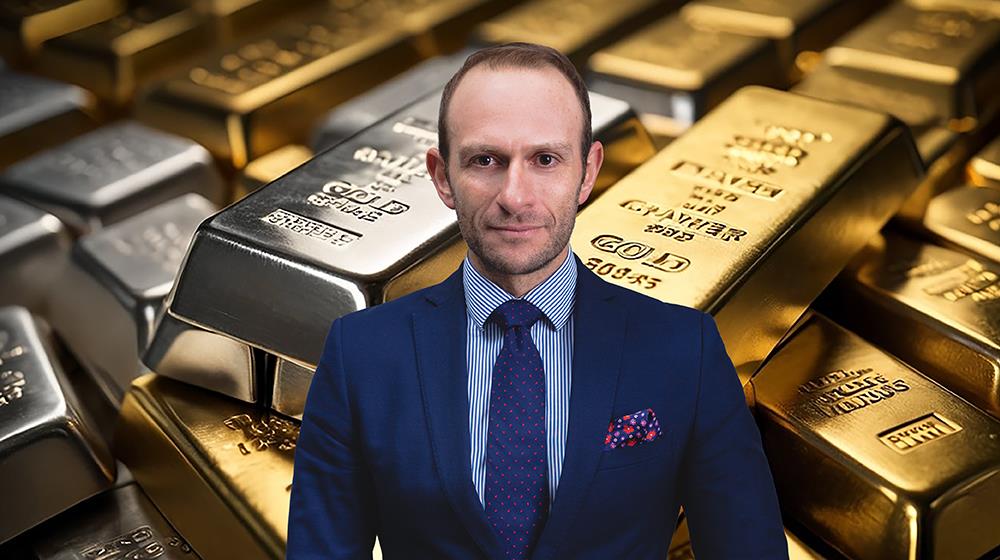Historically, precious metals like gold and silver are considered "safe-haven" assets during periods of uncertainty and conflict, according to Panikos Teklos, Co-Founder and Partner of XPADIA, who was asked by CBN to explain the recent surge of gold and silver prices to a record high.
According to Teklos, this surge is a reflection of the broader trend of investors turning to precious metals as a safeguard in times of heightened global risk. But as he warns, it is important to take note of the risks involved in investing in these commodities.
“Precious metals can be a good short-term hedge against geopolitical uncertainty but may price drift for long periods of time,” he explains in the interview that follows, where he also offers some tips to anyone interested in investing in gold and silver right now.
The price of gold and silver has surged to a new record as a result of the conflicts in the Middle East. Can you explain the reasons why?
The recent surge in gold and silver prices (by 3.5% and 8% respectively over the last month) can be largely attributed to rising geopolitical tensions in the Middle East, particularly the Israel-Hamas conflict. Historically, precious metals like gold and silver are considered "safe-haven" assets during periods of uncertainty and conflict, as they tend to hold their value while other assets may become more volatile.
The key reasons driving the price surge are the following:
- Geopolitical Uncertainty: The escalation of violence in the Middle East heightens global concerns about broader regional instability, leading investors to seek out safer investments. This pushes up the demand for gold and silver, seen as reliable stores of value during times of political or economic instability.
- Inflation Hedge: Gold and silver are often used as hedges against inflation, which may rise due to supply chain disruptions or spikes in oil prices during conflicts. The Middle East's role in global energy markets also amplifies the potential impact on oil prices, which can lead to higher inflation and increased demand for precious metals as protection.
- Weaker Dollar: When geopolitical risks rise, the US dollar sometimes weakens as investors diversify into other assets. The dollar weakening has been further instituted by the progressive easing in the Fed’s monetary policy and the respective reductions in the Fed rates. A weaker dollar makes gold and silver cheaper for holders of other currencies, increasing their appeal and driving up prices.
- Investor Sentiment: As traditional financial markets (stocks and bonds) experience volatility due to the conflict, investors may reduce exposure to riskier assets and increase their holdings in gold and silver, further driving up demand and prices.
- Global Trade: India's lower custom duty on gold has also propelled demand. Chinese consumers have been flocking to gold as their confidence in traditional investments like real estate or stocks has faltered. At the same time, the country’s central bank has steadily added to its gold reserves.
This surge is a reflection of the broader trend of investors turning to precious metals as a safeguard in times of heightened global risk, especially when uncertainty about future economic conditions is high.
Do you think this is a short-term phenomenon or more long term?
The long-term sustainability of the current surge in gold prices depends on several factors, both geopolitical and economic. While the Middle East tensions have provided immediate upward pressure on gold, the key to whether these elevated prices persist will involve a combination of factors:
- Geopolitical Stability: If the Israel-Hamas conflict escalates or expands into a broader regional crisis, gold prices could remain elevated due to ongoing uncertainty. However, if the situation stabilises, some of the geopolitical risk premium may fade, potentially causing prices to moderate.
- Inflation and Central Bank Policies: Gold tends to perform well in inflationary environments, as it acts as a hedge. If global inflation remains moderate due to ongoing supply chain issues, energy price increases, or central banks keep lowering interest rates, gold prices could continue to rise. However, if central banks aggressively raise interest rates to combat inflation, gold could face downward pressure since higher interest rates make non-yielding assets like gold less attractive.
- Demand for Safe-Haven Assets: Investors tend to flock to gold during times of financial market instability. Continued global uncertainties (such as ongoing wars, trade disputes, or financial crises) would likely keep gold demand high. Conversely, if risk appetite improves and equity markets recover, demand for gold as a safe haven could decrease.
- US Dollar Strength: Gold prices are inversely related to the strength of the US dollar. If the dollar weakens due to factors like trade imbalances or shifts in global monetary policy, gold could continue to rise. Conversely, a stronger dollar would likely temper gains in gold prices.
In conclusion, while the surge in gold prices due to Middle East tensions may continue in the short term, long-term sustainability will depend on the interplay between inflation, monetary policy, geopolitical risks, and investor sentiment. Sustained economic or geopolitical instability would support higher gold prices, but easing tensions or tighter monetary policy could reduce its appeal over time.
Is this a good time for someone to invest in silver and gold? Can you give a practical example of how someone from Cyprus can capitalise on this situation and invest?
Whether it’s a good time to invest in silver and gold depends on an individual’s financial goals, risk tolerance and appetite, portfolio composition, time horizon and outlook on the broader economic environment.
Reasons that may advocate towards a favourable timing to invest include the ongoing Middle East tensions and quite importantly if one believes that these risks will persist, then gold and silver could continue to rise as safe-haven assets. Similarly, if one believes that inflation remains a concern or it will worsen due to global supply disruptions or rising energy prices, both gold and silver tend to perform well as hedges. The same logic would apply if Central Banks continue the accommodative policy with lowering rates which support the price of these metals. Lastly, precious metals are often used as a hedge on other traditional financial assets as diversifiers within a portfolio.
On the other hand, when one invests in precious metals, it is important to take a note on the risks to consider. One risk relates to the price volatility that both gold and silver can exhibit especially as investor sentiment shifts in reaction to global events or central bank actions and related changes in global exchange rates. Another one has to do with the time horizon of the investment. Precious metals can be a good short-term hedge against geopolitical uncertainty but may price drift for long periods of time.
When analysing commodities, and in this case, precious metals, analysts often consider the Futures contract forward rate curve as an indicator for the direction of price based on market expectations. When the forward rate is higher than the spot price of the commodity, this is described by analysts as the “contango” phenomenon, whereas when the opposite occurs, this is referred to as “backwardation”. In the case of gold, the forward rate curve is currently, and usually, trading in contango, with some analysts’ forecasts predicting that gold could hit the $3,000 per ounce mark before the end of the year. The base for their argument is the strong institutional demand, the limited supply and the increased use in industrial applications including electronics and healthcare.
If someone wanted to invest in gold or silver, the most common ways to do it regardless of their location (i.e. whether in Cyprus or somewhere else) are the following:
- Physical Bullion: You can purchase physical gold or silver in the form of coins or bars through a certified dealer. In this case one needs to consider secure storage.
- Gold or Silver ETFs (Exchange-Traded Funds): For easier liquidity, one could consider buying shares of ETFs like the SPDR Gold Trust (GLD) for gold or iShares Silver Trust (SLV) for silver. These funds track the price of the respective metals, allowing you to gain exposure without needing to store physical assets. If gold prices rise, the value of your ETF shares will increase accordingly.
- Mining Stocks: Another indirect approach is to invest in gold or silver mining companies. These stocks often rise when precious metal prices increase. However, you’re exposed not only to metal price volatility but also to company-specific risks like operational issues or mismanagement.
- Gold and Silver Futures/ Contracts-for-Differences (CFDs): For experienced investors, futures contracts/CFDs allow to speculate on the future price of gold or silver. This can be highly profitable if prices move in one’s favour but can also be very risky and result in loss of capital if prices move in the opposite direction especially due to leverage.
The last three ways to invest could be accessed through a private bank or licensed brokers and licensed electronic platforms. It is important to consider transaction fees and any other applicable fees when investing in any financial products as well as all other compliance and risk disclosure considerations provided by the applicable regulatory framework (in Cyprus and the EU, the applicable framework is known as MiFID II).
Lastly, the above should not be construed as investment advice in any way and any person interested in investing in financial assets should seek professional and qualified investment advice.
Panikos Teklos is the Co-Founder and Partner of XPADIA, a private company specialising in Private Wealth, Deals Advisory, Strategic Consulting, Real Estate and International Business development services.









